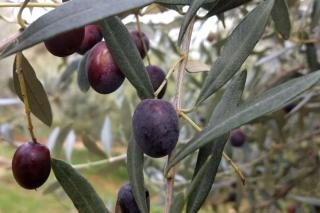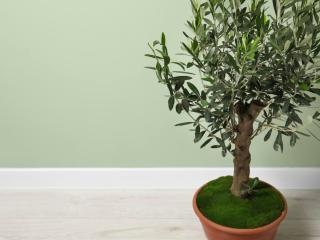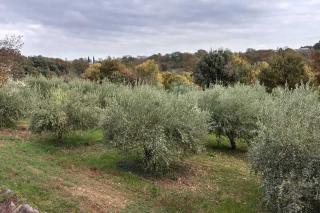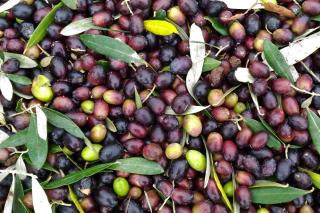

It is the symbol of the Mediterranean, and has conquered gardens across the world. A symbol of peace, immortality, hope and abundance, the olive tree pleases everyone thanks to its beauty and hardiness.
This is a fabulous ornamental shrub, doubling down as a prolific fruit tree when the growing environment suits it well. Some specialized nurseries even have collections of trees that are already over a century or two old.
It is very, very resilient, both to the cold and to diseases. It can even cope with regions that know frost and freezing quite well.

Two authors in particular have dug deep into the lore of majestic, unique trees, Noel Kingsbury and Andrea Jone. They claim the following:
Even though Olea europea thrives in warm, dry Mediterranean climates, it’ll still grow very well in regions with cooler temperate climate. Its lifespan can exceed 2000 years!


Select citrus soil mix for it. No need to add any fertilizer: this plant loves poor soil! Stake it during the first few years, especially if it’s shaped into a taller tree shape.
After it has settled in, what’s important is to ensure that the root ball is never soggy. Diseases that kill this tree are all rot-related diseases: verticillium wilt, sooty mold, “peacock spot”… except for that newcomer in Europe, Xylella fastidiosa.
To avoid these illnesses, it bears repeating that the olive tree is a drought-lover. It loves dry soil! Apply bordeaux mix to treat and avoid water-related disease. Cover the foot of the tree with natural, plant-based mulch and space your watering, not more than once a week in summer and just a little bit in water (never when it freezes). Note that this tree is one of the rare plants that will love tap water! Indeed, grows naturally in chalky soil, so mineral-laden tap water will give it a taste of home.
In the cold season, bring your olive tree indoors. Give it a space in the garage or house that has lots of natural light. Alternatively, if planted in the ground, wrap it up with winterizing fleece. Open it up from time to time to check on how much moisture is building up, so you can ventilate it with dry air instead.

Getting a proper olive harvest is only possible where the weather is warmer. After a few years, you can hope to harvest green olives (in September) or black ones (in December). Best is if you select a self-fertilizing variety. Don’t bite into them immediately – blech! You have to dry them or macerate them first with saline. Then, they’ll be delicious!
Claire Lelong-Lehoang